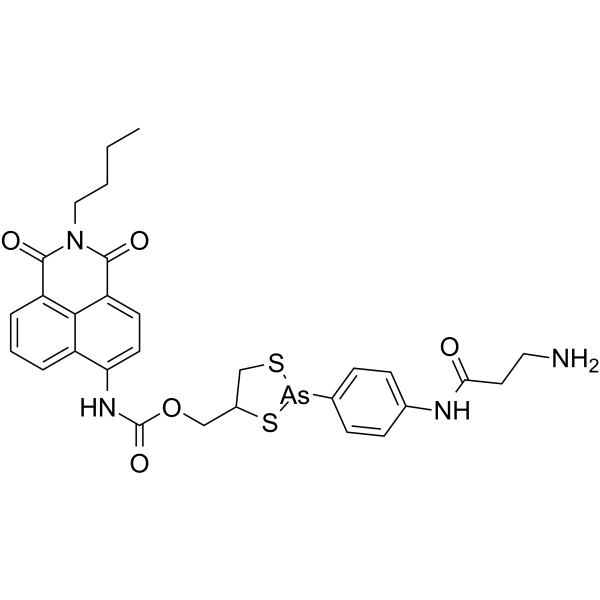荧光染料Dye Reagents NEP;(Synonyms: VDP-green (NEP))
NEP (VDP-green (NEP)) 是一种基于分子内电荷转移 (ICT) 机制的感应荧光探针,用于感应含邻二硫醇的蛋白质 (VDPs)。NEP 在活细胞和动物体内对 VDPs 表现出高选择性,并显示强绿色荧光信号 (λex/λem=430/535 nm)。NEP 具有用于帕金森氏症研究的潜力。

NEP Chemical Structure
CAS No. : 2414276-32-5
| 规格 | 价格 | 是否有货 | |
|---|---|---|---|
| 5 mg | ¥3500 | 询问价格 货期 | |
| 10 mg | ¥5800 | 询问价格 货期 | |
* Please select Quantity before adding items.
| 生物活性 |
NEP (VDP-green (NEP)) is a turn-on fluorescent probe based on the intramolecular charge transfer (ICT) mechanism for sensing vicinal dithiol-containing proteins (VDPs). NEP exhibits high selectivity toward VDPs in live cells and in vivo and displays a strong green fluorescence signal (λex/λem=430/535 nm). NEP has the potential for parkinsonism[1]. |
|---|---|
| 体外研究 (In Vitro) |
NEP (1-30 μM; 6 hours) has no or little cytotoxicity in HepG2 and PC12 cells[1]. MCE has not independently confirmed the accuracy of these methods. They are for reference only. |
| 体内研究 (In Vivo) |
NEP (10 μM; for 4 h) causes the obvious green signal in zebrafishes (4 day old)[1]. MCE has not independently confirmed the accuracy of these methods. They are for reference only. |
| Clinical Trial |
|
| 分子量 |
654.63 |
| Formula |
C29H31AsN4O5S2 |
| CAS 号 |
2414276-32-5 |
| 运输条件 |
Room temperature in continental US; may vary elsewhere. |
| 储存方式 |
Please store the product under the recommended conditions in the Certificate of Analysis. |
| 参考文献 |
|
